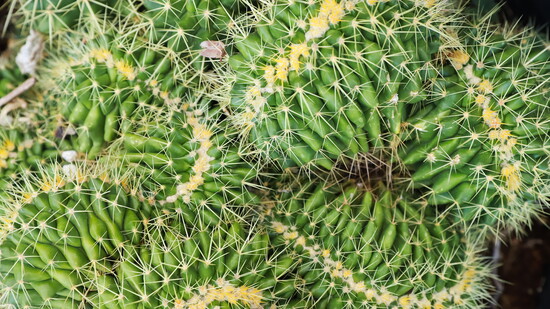As our September Style Issue celebrates bold expressions and curated living, there’s something to be said for restraint; in other words, the quiet clarity that comes from knowing what not to add. That’s the ethos behind High Desert Designs, where owner Chad Norris transforms outdoor spaces with both plants… and presence.
“Arizona teaches you to read terrain like a story,” Chad says. “You don’t force things here… the sun, the wind, the grade… they all speak first.”
Raised in the world of irrigation and grading, Chad grew up with the fundamentals. But in 2016, while working under another designer, he had a shift:
“I started looking at outdoor space more like a canvas. Not just planting a yard, but composing a view. It wasn’t just functional anymore. It was emotional.”
That emotion now finds form in everything he touches, from custom hardscape to sculptural plant palettes, but much of it starts in a place few designers have access to… a nursery.
“Having our own inventory started as a logistical move. I wanted the freedom to make changes during installation. But over time, it evolved. We began collecting specimen plants, rare sizes, and unique silhouettes. Now, we’re curating a living collection.”
Chad’s nursery is less about abundance, more about intention. Each plant is hand-selected, acclimated, and conditioned for our Arizona climate- a creative lab where instinct meets precision.
“There’s a relationship you build with a plant when you’ve watched it grow for years. You understand its lean, its color shift, how it plays in light. That kind of intimacy makes design more instinctive…more sculptural. It stops being plug-and-play.”
That sense of sculpture guides Chad’s entire approach, especially in his hardscape work. Don’t expect overdone pavers or generic backyard installs.
“Hardscape is the structure beneath the softness. It’s not just where you walk, it’s how the space moves, how it breathes, how it frames light and shadow.”
To Chad and his team, precision is everything.
“Builder-grade hardscape often tries to fill space. Editorial hardscape holds space. It’s the difference between using five materials versus two done right. Flush transitions. Hand-finished edges. Shadow reveals that pull your eye instead of competing for it.”
Here are Chad’s style tips for what’s in (and out) when it comes to curating a desert-inspired ambiance.
IN:
“Oversized joints and negative space… let the materials breathe.”
“Natural materials with patina… reclaimed boulders, weathered steel, hand-finished concrete.”
“Integrated, sculptural seating… furniture that’s part of the landscape.”
OUT:
“Over-patterned pavers… they date quickly and fight the architecture.”
“Fake turf overuse… there’s a place for it, but not everywhere.”
“Over-designed lighting… if you can see the fixture, you’ve already lost the moment.”
On a recent Paradise Valley project, Chad rebuilt a once-disconnected backyard into a seamless extension of a modern interior.
“We used poured-in-place concrete, steel planters, and floating stair transitions. It reframed the entire home. Like the house finally exhaled into the landscape.”
And sometimes the boldest moves come from the nursery itself. In one Scottsdale courtyard, the client expected a classic desert palette.
“Instead, we pulled rare columnar cacti, Euphorbia, and a massive aloe. It was architectural, moody, and felt like a living sculpture garden.”
And while the design world can be quick to chase trends, Chad’s signature is tied to timeless.
“If there is a High Desert look, it's restraint. Sculptural plants, tonal palettes, negative space used with intention.”
That restraint shows up in the final touches… like the oversized Crested Saguaro he’s been growing for years.
“It looks like something out of an architectural sketch, completely surreal. I’m still waiting for the right client and the right space.”
Until then, it sits in his nursery, styled by time.
highdesertdesigns.com
“Having our own inventory started as a logistical move. I wanted the freedom to make changes during installation. But over time, it evolved. We began collecting specimen plants and now we’re curating a living collection.”
"You develop a bond with a plant over time, learning its lean, color shifts, and how it dances in the light."
